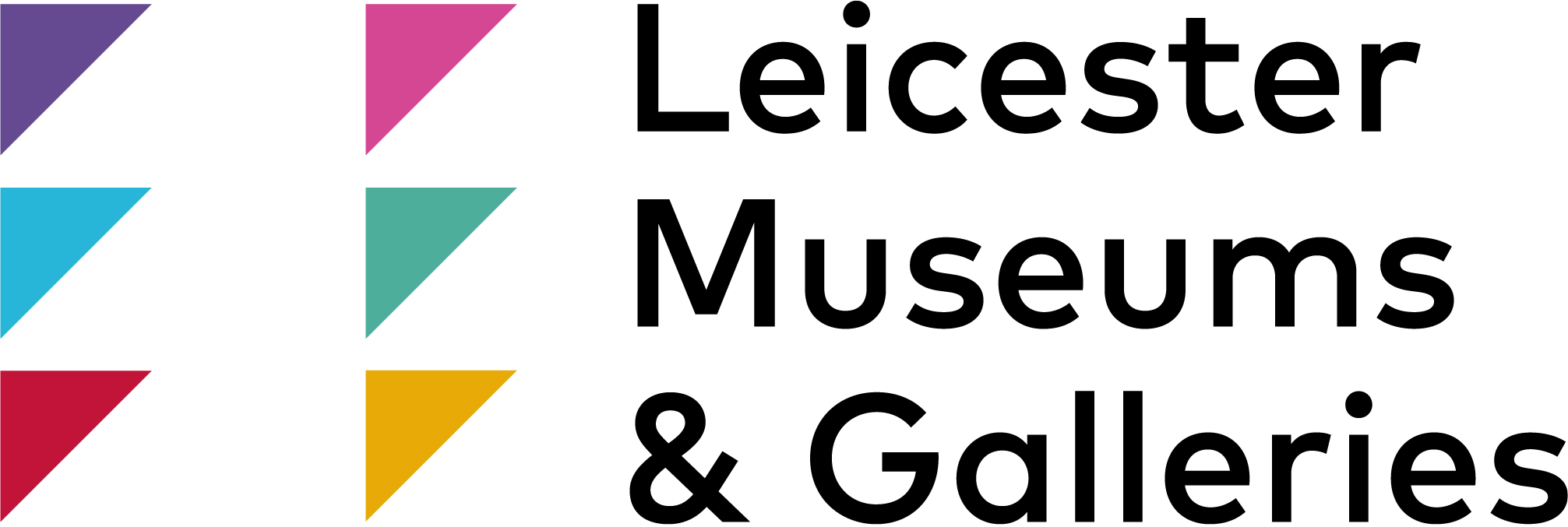This is an online version of an exhibition which can be seen on display at Newarke Houses until 1 September 2024.
The exhibition celebrates the people who live and work along Narborough Road. It has been created with the help of local people, who gave us both their time, and told us many stories of their experiences of life in the area. These memories span from the early 1960s until more recent times.
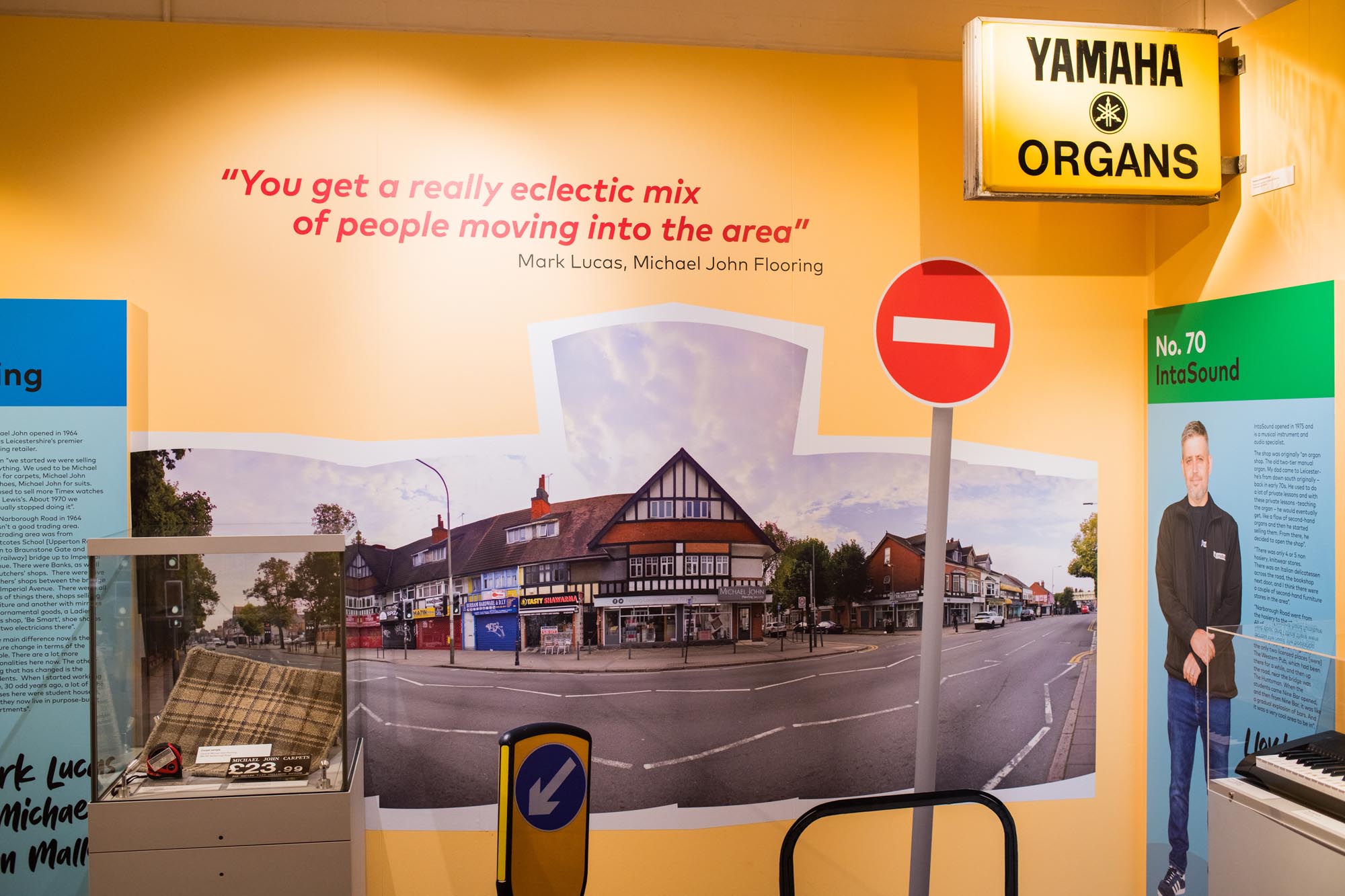
Yamaha Illuminated Sign - previously mounted outside IntaSound
A not-so-brief history!
Nearly two thousand years ago the Narborough Road was part of a long Roman Road called the Fosse Way. This road ran from Exeter to Lincoln, passing through Leicester, which was then a regional town known to the Romans as Ratae. Archaeological evidence shows that the people of Roman Leicester came from all over the Roman Empire.
Though the road has been here for centuries, the westward expansion of Leicester was limited by the natural barrier of the River Soar with its numerous channels and surrounding marshland. In 1841 the river crossing at West Bridge became so “inconvenient” and “unsafe” that people began to look for a solution. This eventually led to the flood prevention scheme of 1876, which widened and deepened the river, and rebuilt the West Bridge so that it was possible to cross the river safely.
At the same time the growth of the knitting, hosiery, boot, and shoe industries attracted more workers to Leicester. This stimulated the building of new homes off the Narborough Road as more people moved into the area to live and work. This growth was also helped by the provision of better local transport infrastructure. This included the Great Central Railway of 1894, and the introduction of tramways along the Narborough Road, Hinckley Road and Fosse Road Central.
The population of the area increased rapidly in the years between 1861 and 1901. Many of these newcomers came from the surrounding countryside, specifically Northampton and Coventry. 41% people living in the area in the 1881 census were recorded as being born outside the city.
After the Second World War the makeup of the population in the area began to change again. Many newcomers had been displaced from their original homes by the conflicts of the 1930s and 1940s. Others arrived seeking work and new opportunities. For example, the 1951 census records Ukrainians, born in the then USSR, Eastern Europeans, Jewish people, and some of the first arrivals from the Caribbean all living in the area.
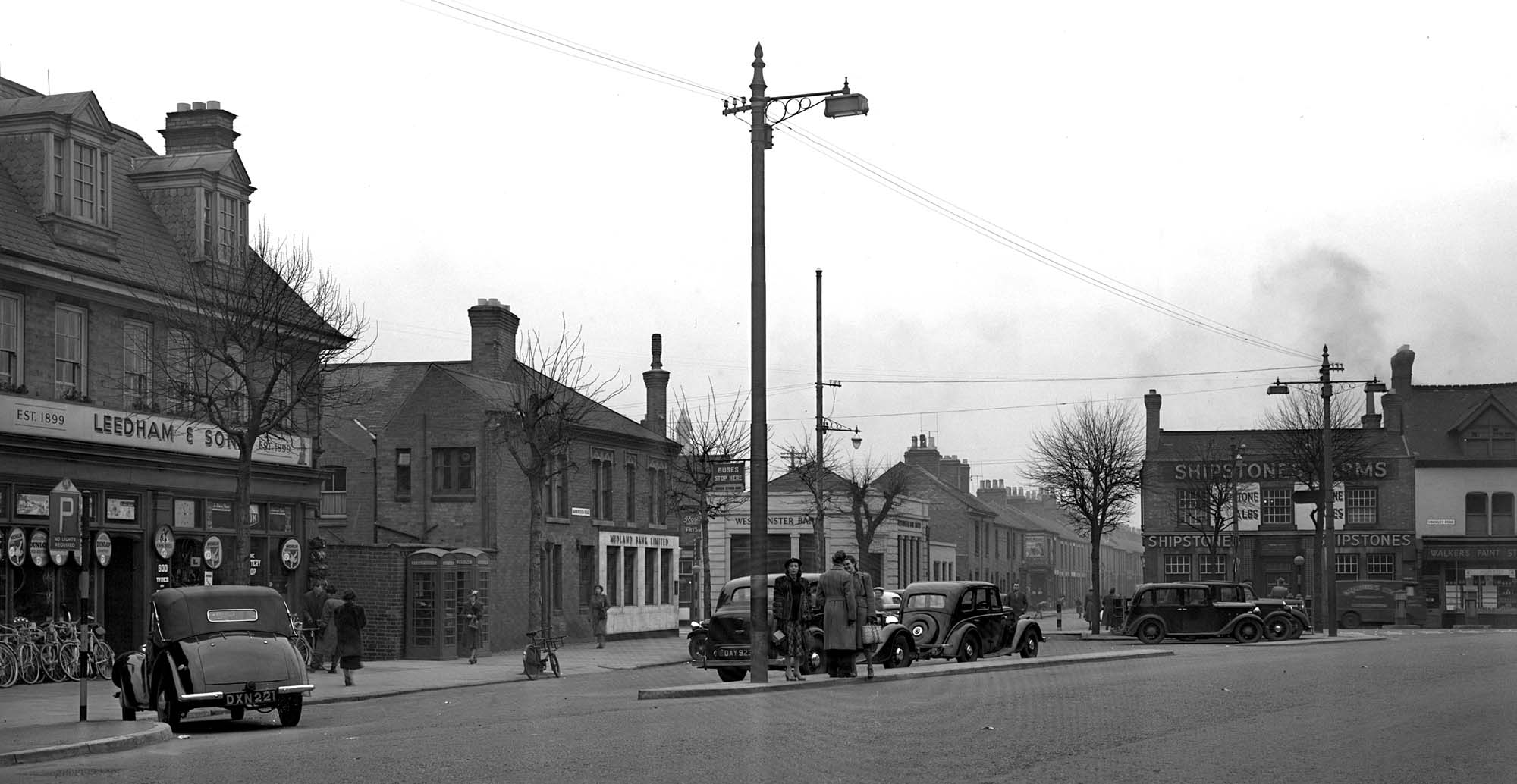
Narborough Road and Braunstone Gate Junction, February 25th 1952
In 2015 an academic research project called “Super Diverse Streets” looked at how urban retail economies are shaped by migrants. Four shopping streets in UK cities were selected for their ethnic diversity. The research explored the background of the shopkeepers on the roads. It found that Narborough Road included people who had migrated from 22 different countries, making the road the most diverse street in the UK.
For nearly two thousand years the Narborough Road has welcomed people from all over the World. Long may it continue.
The people of Narborough Road
This exhibition celebrates the people who live and work along Narborough Road. It has been created with the help of local people, who gave us both their time, and told us many stories of their experiences of life in the area. These memories span from the early 1960s until more recent times.

From left to right: Kate Malloy & Gurleen Johal, Shabir Jakhura, Mark Lucas & Michael John Malloy, Lloyd Wright.
No. 38-40 - Westcotes Library
Kate Malloy & Gurleen Johal
Westcotes Library opened in 1889, and is a Leicester City Council library. Narborough Road has “changed a lot – culturally, the types of businesses have not changed themselves. Who are they run by and who are they catered for has changed with the different groups that have arrived into the city”.
The “international supermarket across the road, 10 years ago, was very much geared towards Asian customers, full of spices, but there is now a Turkish bakery in there as well, and other foods we wouldn’t have seen 5 years ago”. “One of the questions that we ask when we get a new member [of the library] is ‘what is your preferred reading language’? And that is for a very good reason, because then it gives us an alert as to what’s happening.
So, now we have a much bigger Polish section, we have a small but a quite popular Russian section as well. But we wouldn’t know this, and we wouldn’t be able to cater for that demand, if we didn’t ask that question when they come in. The libraries, they cater for community languages which is an evolving service”.
No. 79-81 - Jak Stationers
Shabir Jakhura
Jak Stationers opened in 1989 and supplies quality office products. “We have been here in some form or another since 1989.”
When we opened there was “only really a few shops here, three or four shops only on this part of the Narborough Road. We were the second shop to open, Malcolm at IntaSound opened together with me. We were the only two. The rest were all wholesalers. They all moved out. We remained here, and then they turned into bars, pubs, and supermarkets”.
The “mix of people has changed; we’ve got a lot of people from abroad who’ve moved here. There used to be a lot of students but now they’ve moved to the blocks. So, we’re getting more families moving this way”.
“We try to help people as much as we can, and we’re also entrenched in the area as well. My dad goes to the Mosque on Barclay Street, and we try to give a bit back to the community. We do a lot of work with the churches and the temple next door in terms of trying to give a harmonious vibe to it all.”
No. 188-190 - Michael John Flooring
Mark Lucas & Michael John Malloy
Michael John opened in 1964 and is Leicestershire’s premier flooring retailer.
When “we started we were selling everything. We used to be Michael John for carpets, Michael John for shoes, Michael John for suits. We used to sell more Timex watches than Lewis’s. About 1970 we gradually stopped doing it”.
The Narborough Road in 1964 “wasn’t a good trading area. The trading area was from Westcotes School [Upperton Road] down to Braunstone Gate and from the [railway] bridge up to Imperial Avenue. There were Banks, as well as butchers’ shops. There were five butchers’ shops between the bridge and Imperial Avenue. There were all sorts of things there, shops selling furniture and another with mirrors and ornamental goods, a Ladies dress shop, ‘Be Smart’, shoe shops and two electricians there”.
“The main difference now is the culture change in terms of the people. There are a lot more nationalities here now. The other thing that has changed is the students. When I started working here, 30 odd years ago, a lot of the houses here were student houses, but they now live in purpose-built apartments”.
No. 70 – IntaSound
Lloyd Wright
IntaSound opened in 1975 and is a musical instrument and audio specialist.
The shop was originally “an organ shop. The old two-tier manual organ. My dad came to Leicester- he’s from down south originally – back in early 70s. He used to do a lot of private lessons and with these private lessons -teaching the organ – he would eventually get, like a flow of second-hand organs and then he started selling them. From there, he decided to open the shop”.
“There was only 4 or 5 non hosiery, knitwear stores. There was an Italian delicatessen across the road, the bookshop next door, and I think there were a couple of second-hand furniture stores in the area”.
“Narborough Road went from the hosiery to the student boom. All of a sudden it became a popular area for students, bars started popping up. Originally the only two licensed places [were] The Western Pub, which had been there for a while, and then up the road, near the bridge was The Huntsman. When the students came Nine Bar opened, and then from Nine Bar, it was like a gradual explosion of bars. And it was a very cool area to be in”.

From left to right: Puneet & Parveen Kumar, Eva & Igor Muzica, Ian Smalley, Lal Sangra.
No. 206 - Taurus Health & Fitness
Puneet & Parveen Kumar
Taurus Health opened in 2007 and is a sport nutrition, health food and vitamins store.
When we opened there was “not as many barber shops or takeaways. It was more retail based, like more carpet shops, flower shops. Now it’s become more food based, obviously more barber shops as you know. It’s been nicknamed ‘Barberosa’. It’s good because it brings in a lot of people to the area. You can’t get that alliance off Amazon. You can’t get a haircut off Amazon. So, they’re driving more people down”.
“Nails are doing well. Cafes, and people are outdoors eating. Guys having their faces done, eyebrows… It sounds a bit weird, but it actually works really, really, well”.
“It can be hectic, but it actually works. Everyone just gets along, it’s diverse, it’s vibrant, it’s energy. It’s like, there’s so much energy on this street”.
“Younger people are now starting to move into this area and they’re shopping more local. They prefer to shop and spend their cash in physical stores, it’s slowly becoming full circle. So, it’s actually turning out really good”.
No. 107 - Boon Boon
Eva & Igor Muzica
Boon Boon opened in 2023 and is a bakery which specialises in Eastern European baked goods.
“When we were thinking about the business, this street comes into our mind because it is one of the busiest streets. Always busy. That’s why we decided to have a shop here. We are happy and customers is happy, they’re coming second, third time, so it means we’re doing well”.
“People is very friendly. Very funny. A lot of funny things you can see on the streets. People are very polite. Meet new people from new countries, like Bulgaria, from Slovakia. A customer once ask me if I have ‘cake without cream’? I said ‘I don’t know what you mean, but I have bread. I can give you bread’. I don’t know what to say. I can’t imagine cake without cream. Maybe it exists somewhere but not in England, not in my country Moldova”.
“I like the street, because here you can meet people from other countries. Some chatty people, you can chat to them and ask about their culture, about their cakes in their country. So, it makes your day more nice, more interesting”.
No. 68 - Tin Drum Books
Ian Smalley
Tin Drum opened in 1986 and is a second-hand bookshop.
The Narborough Road was a “remarkable place” when we moved here from Canada. “We were able to buy the bookshop fairly cheaply. The road reflected the time, the socio-economic situation. People of Indian descent who had been kicked out by Idi Amin”.
“The predominant shopfront was the fabric wholesaler. That made it interesting. There were also several antique, collectible or junkshops, which were nice. When we arrived, there were still a few fronts that were actually still houses. We were just on the edge of the transition”.
“We’ve seen significant waves of change. Things happened at the University, the poly became a university, and we see students for a while, while they were still reading books. We move slowly into the arrival of Eastern Europeans who start coming in. Very welcome to Eastern Europeans because they were full of interest and lots of enterprise. So now we’ve moved into a new set of people arriving, I think largely from the Middle East”.
The road is “like a sort of shifting diversity. One diverse unit moves in and then moves out and then it’s replaced by another one”.
No. 95 - Shonki Bros Estate Agents
Lal Sangra
Shonki Bros opened in 1986 and is an estate agent and auctioneer.
“It’s a family business and I have been working for all those 37 years and many more.”
“I came in at six years old, me and my brother who was two years older than me, he was eight years old. My dad wanted us to get a feel of the quality of money and learn how to earn money. On a Saturday morning while our friends were all sat at home watching Tiswas, me and my brother were in the office, working from 9 till 1pm”.
“Narborough Road was very different in those times. We had quite a few financial institutions. We had banks here, we had insurance offices, we had a Boots. Barclays Bank. We had a fruit and veg shop on the corner of Barclays Street. Three Sisters on Harrow Road. Many-many different traders.”
“We’ve got a lot of food outlets on Narborough road” these days. “Loads of them. From the beginning of Narborough Road up to Upperton Road. There’s either a hairdresser or a beauty salon, or food orientated”.
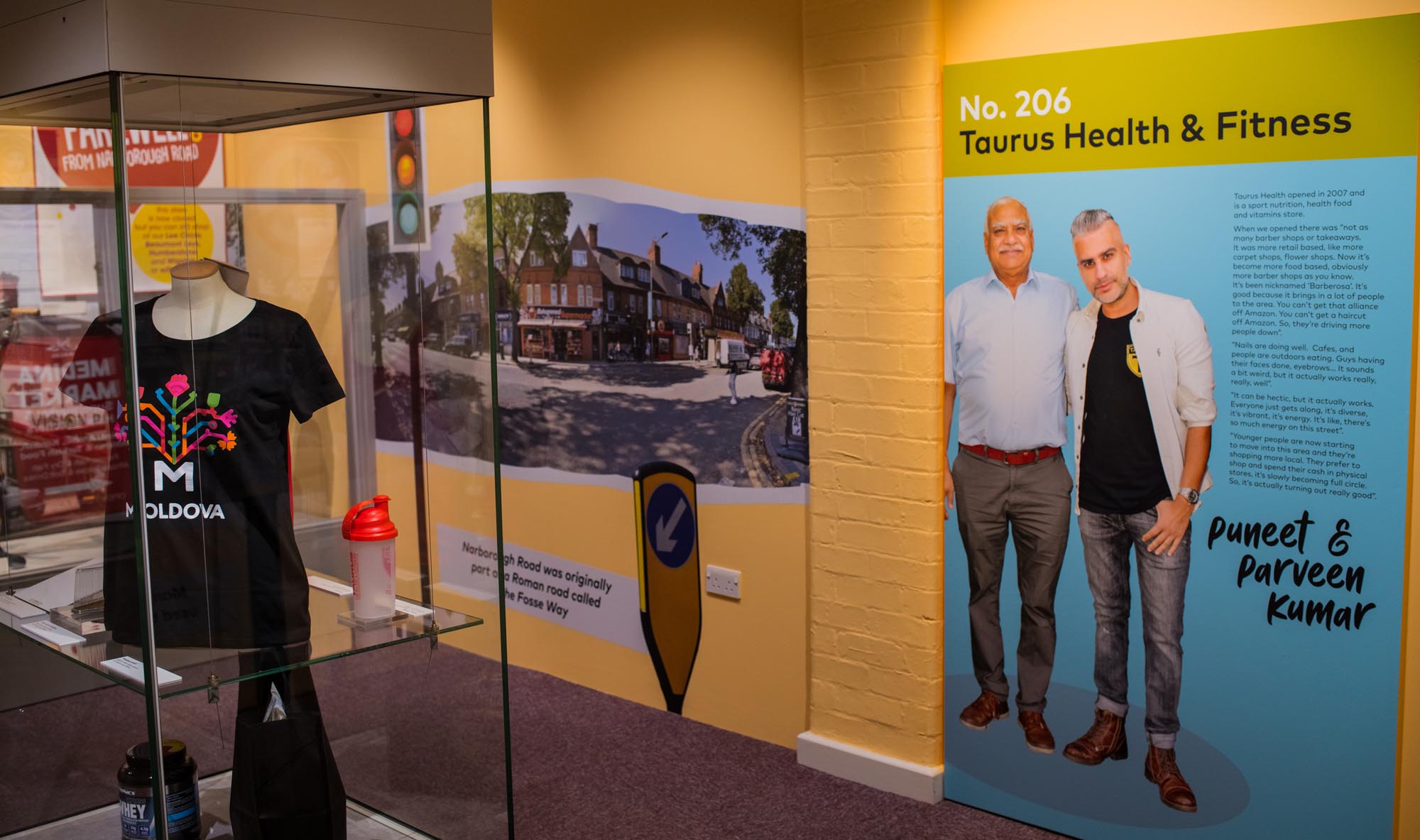
Popping to the Shops exhibition at Newarke Houses
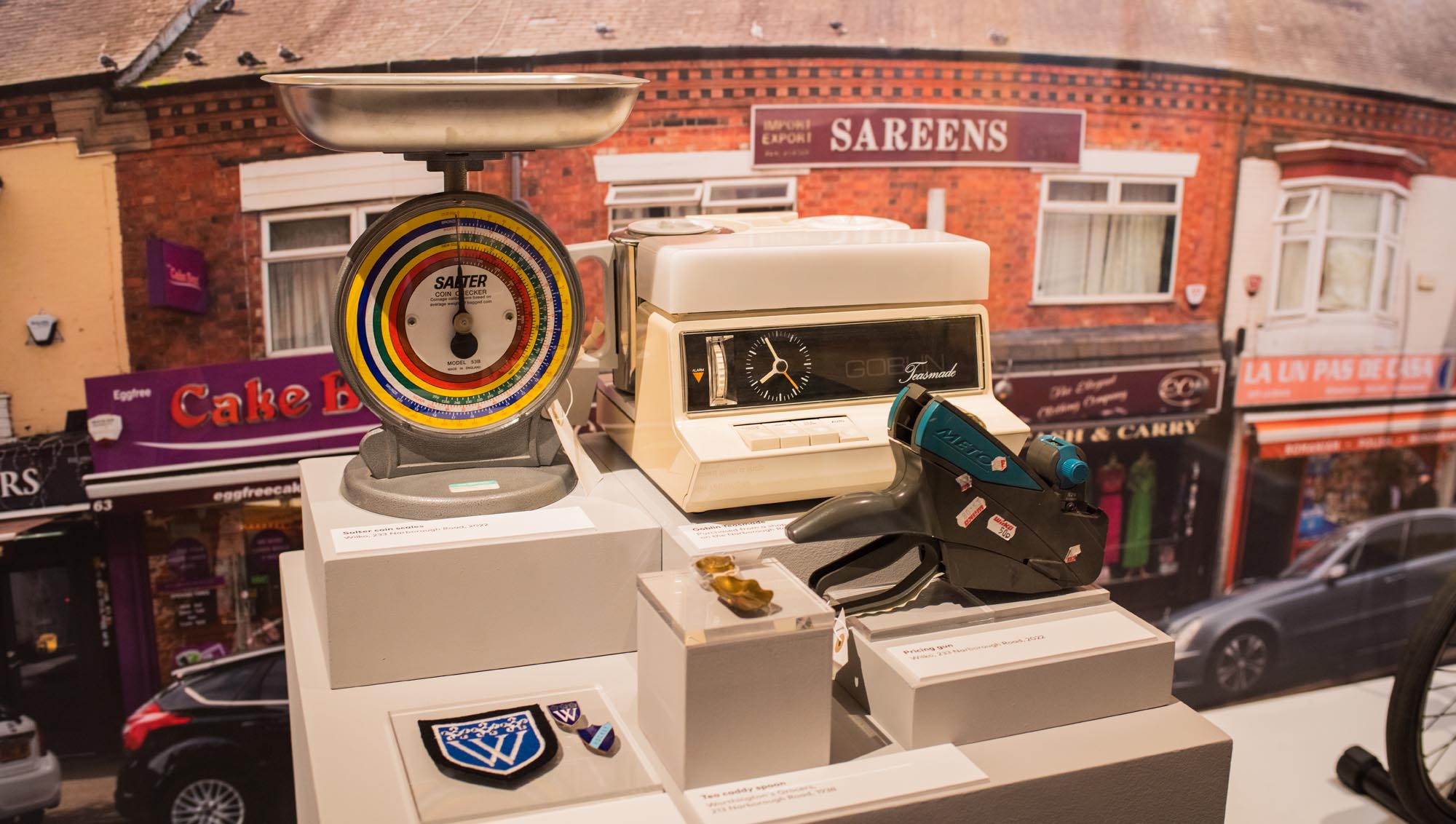
Salter Coin Scales and Pricing Gun- Wilko, 2022
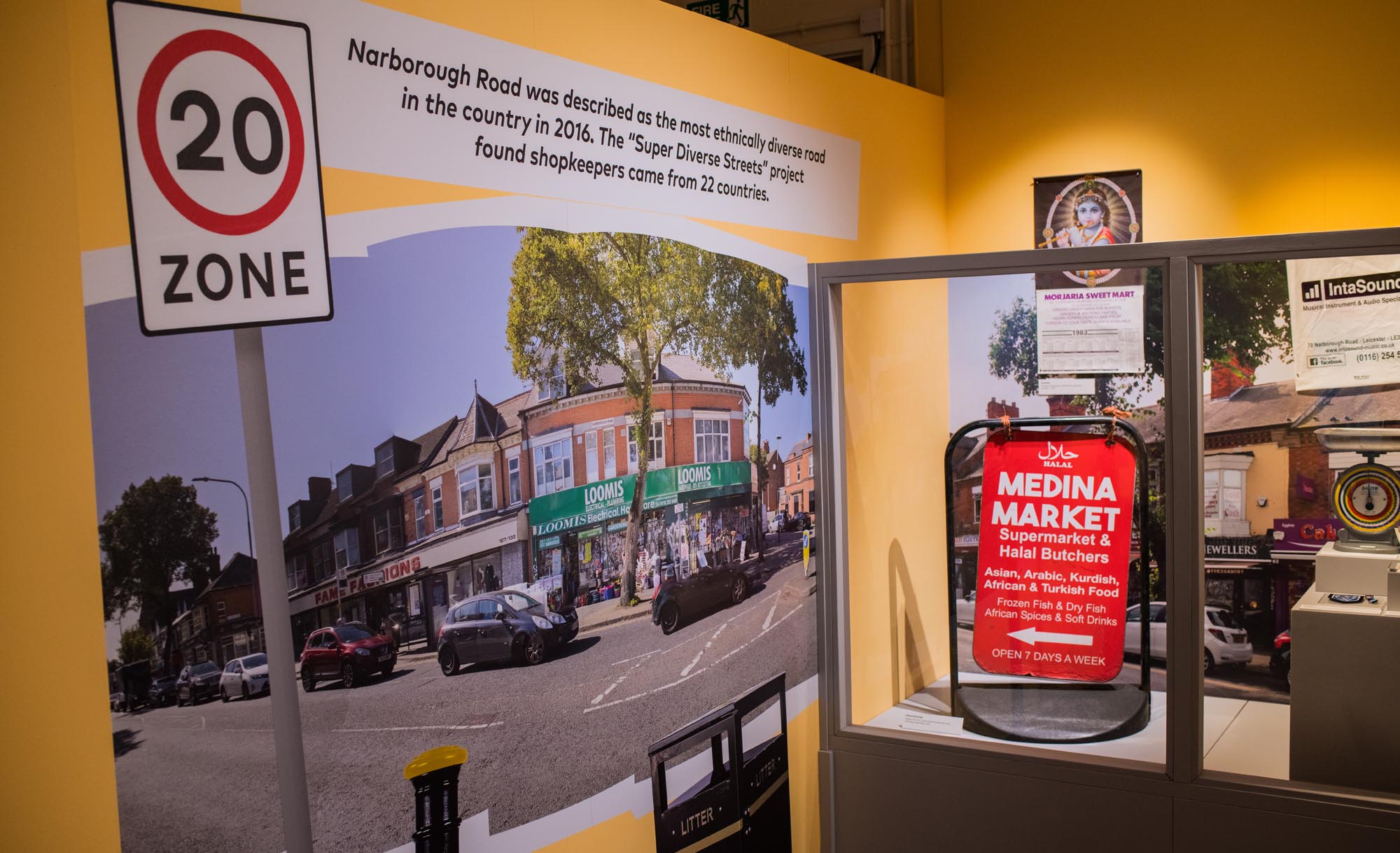
Advertising sign - Medina Market, Supermarket & Halal Butchers, 2021
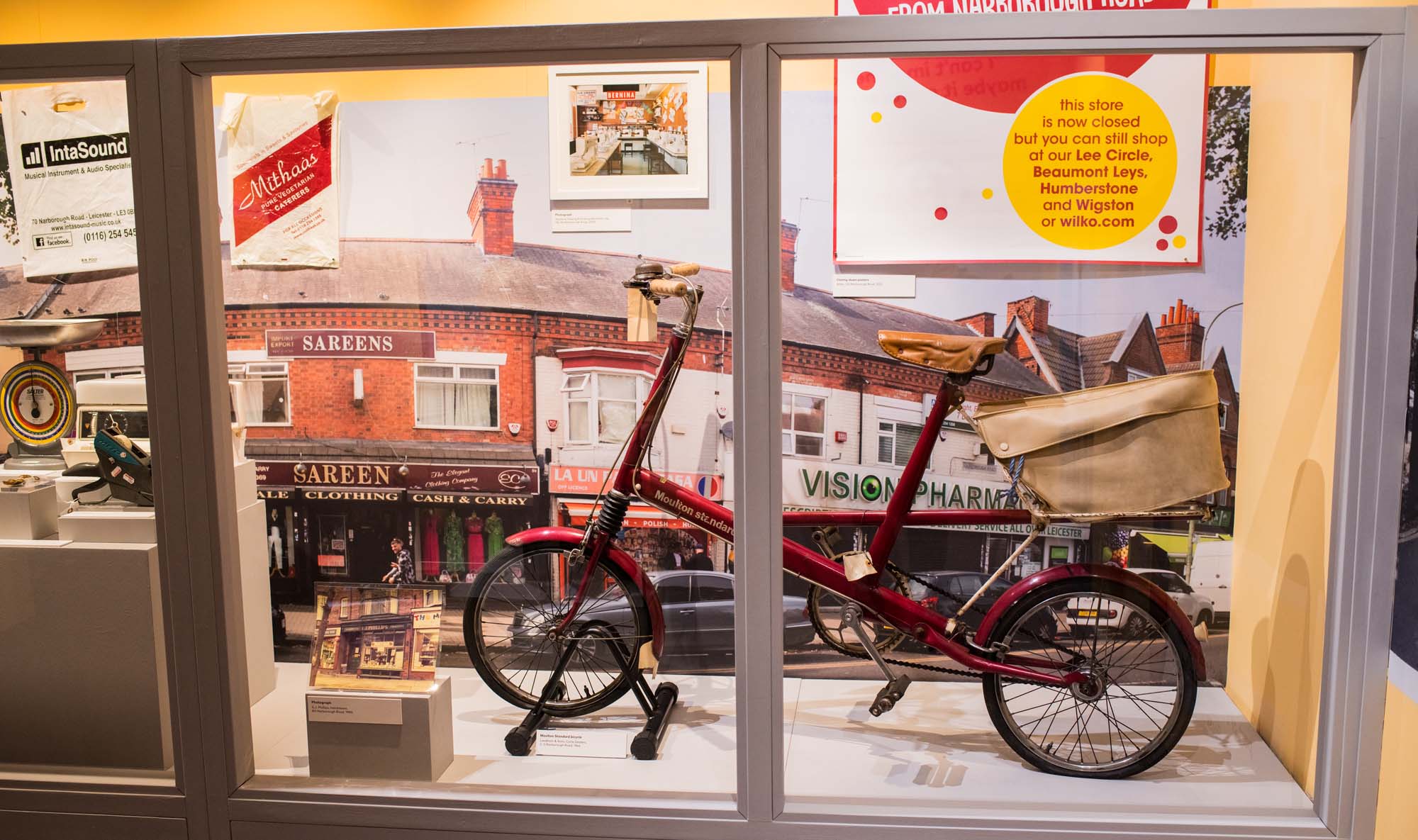
Moulton Standard Bicycle - Leedham & Sons, Cycle Dealers, 1964

